Satoyama is not found in Tokyo. For Satoyama, the area between mountain foothills and farmland, you have to go to the province. This is easy to reach. Japan’s perfect and well-timed infrastructure makes it possible. The Shinkansen express train crisscrosses the entire country. The trick is simply to get off at places that are even on the classic travel route, but are mentioned far too rarely.
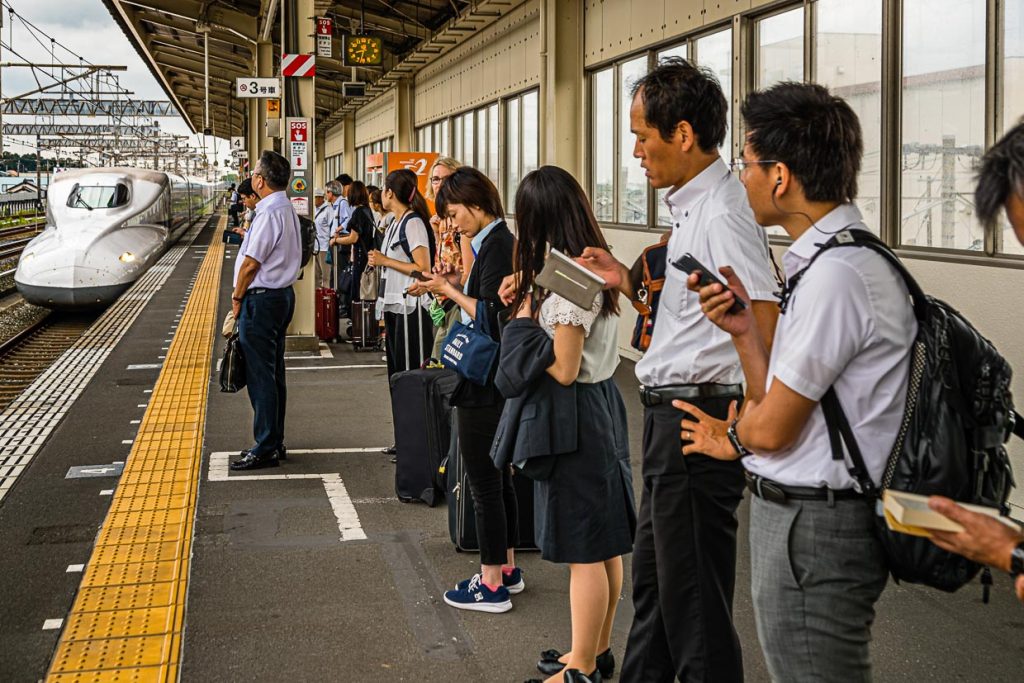
The arrow-fast Shinkansen also makes a stop in Fuji City on its way from Tokyo to Kyoto. From there, take the JR Minobu Line to nearby Fujnomiya. We show how to fill a day in the province with Japanese specialties: A virtual climb up Mount Fuji, a visit to the Shiraito waterfalls, making soba noodles with a world-famous local, and biking through the Satoyama countryside to a sake brewery.
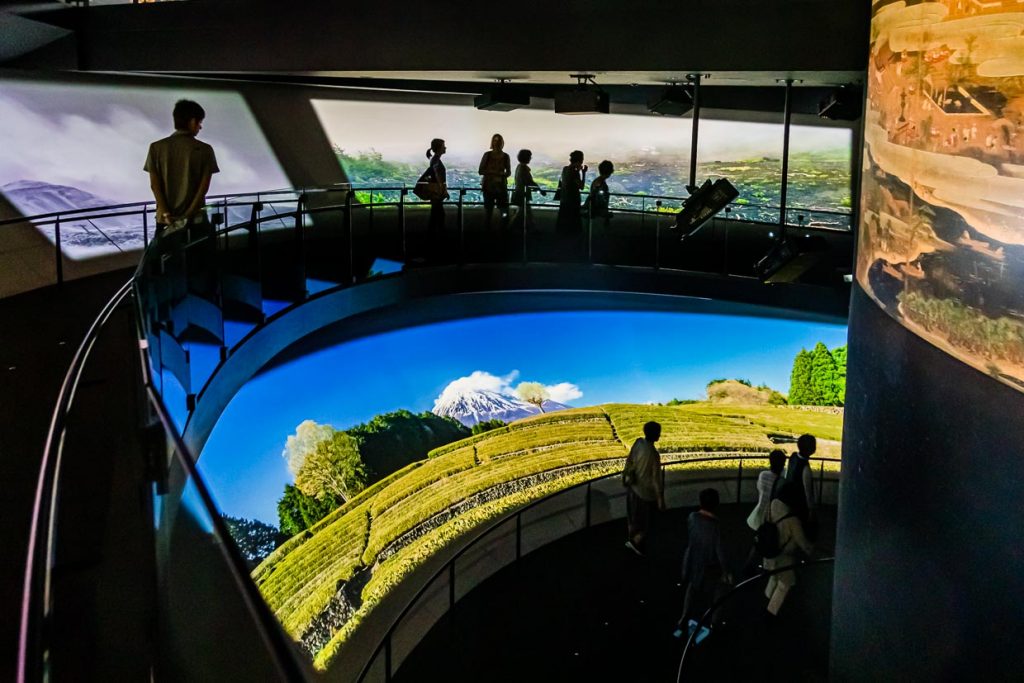
Mount Fuji can be climbed in Fujinomiya
A stop at Mount Fuji should not be missed on a trip to Japan. Especially if you are leaving Tokyo, heading south to Osaka or Kyoto. Mount Fuji-san is immaculate and, at 3,776 meters, the highest mountain in Japan. For many months of the year, the Japanese see their shy goddess, when she is not shrouded in clouds, with a snow-covered cone. Widely recommended is a view of the famous mountain from the Five Lakes, in Yamanashi Prefecture. Less well known is a stop in Shizuoka, the prefecture where Japan’s national shrine is geographically located.
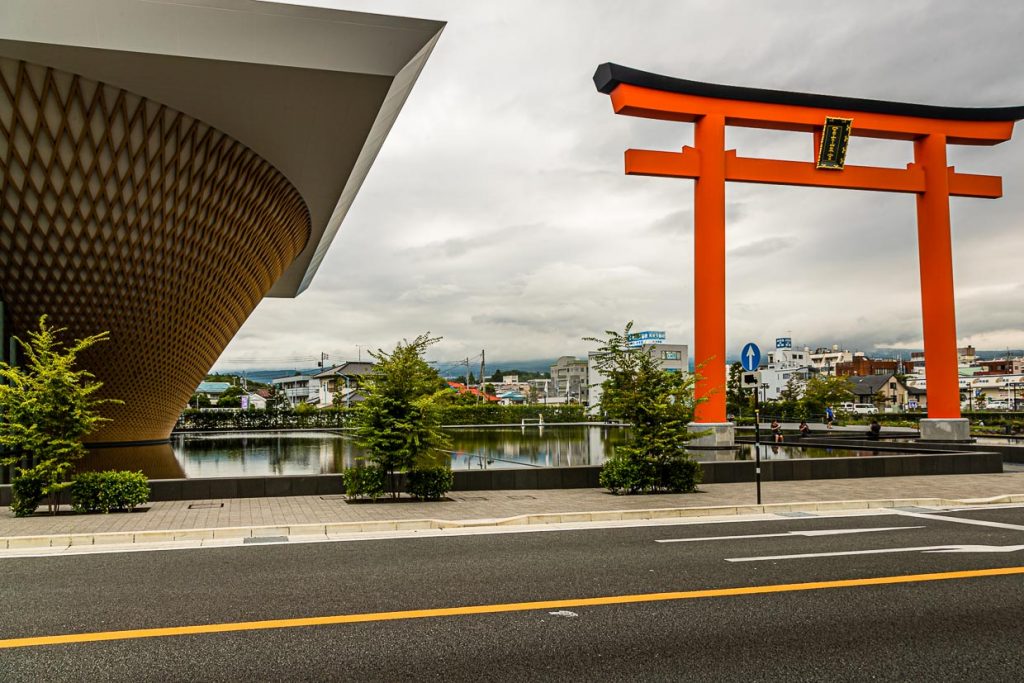
Fujinomiya is home to the Mount Fuji World Heritage Centre. The city is located at the foot of Mount Fuji in Shizuoka Prefecture. Fujinomiya is the city closest to the Bright Mountain of Japan. Only during a narrow window of time in the summer months is it possible to climb the 3,776-meter mountain. An experience that must then be shared with many others.
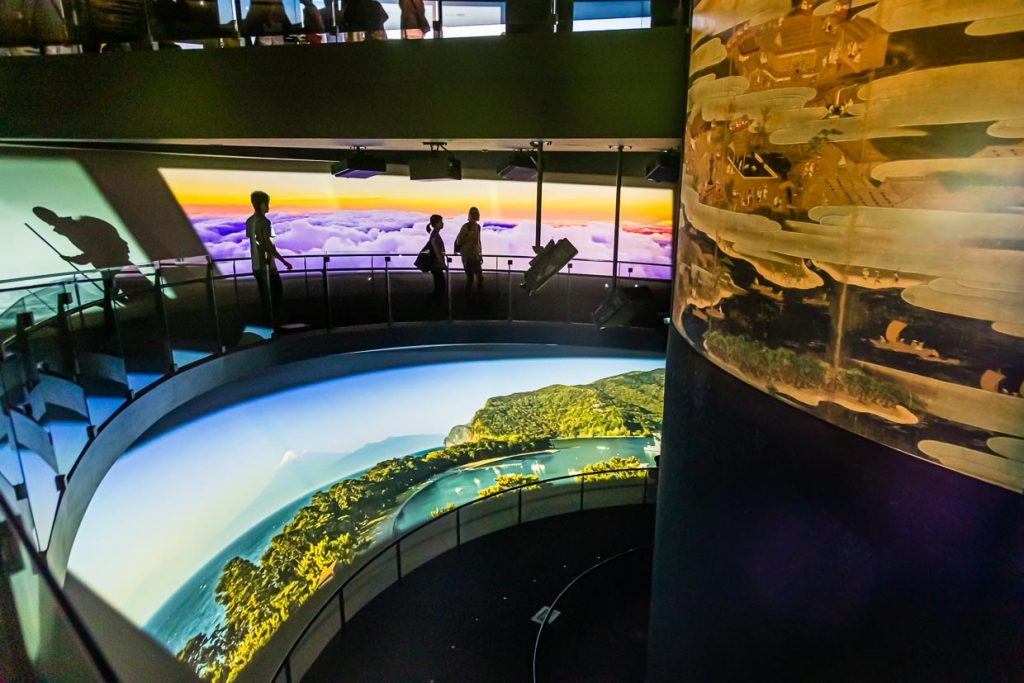
A virtual ascent is possible all year round in Fujinomiya. Here stands the architecturally remarkable museum in honor of the sacred mountain. At the Mount Fuji World Heritage Centre, the mountain has literally been turned upside down. Its perfect cone shape has been recreated and clad in cypress wood grown on Mount Fuji. Inside, more than 3,000 square meters of space surround the sacred mountain. In a spiral, the visitor walks up Mount Fuji flanked by projection screens and large-format images in a walking simulation. There, they experience the seasons as well as the rituals of the pilgrims, for whom hiking to the summit is still a spiritual act today.
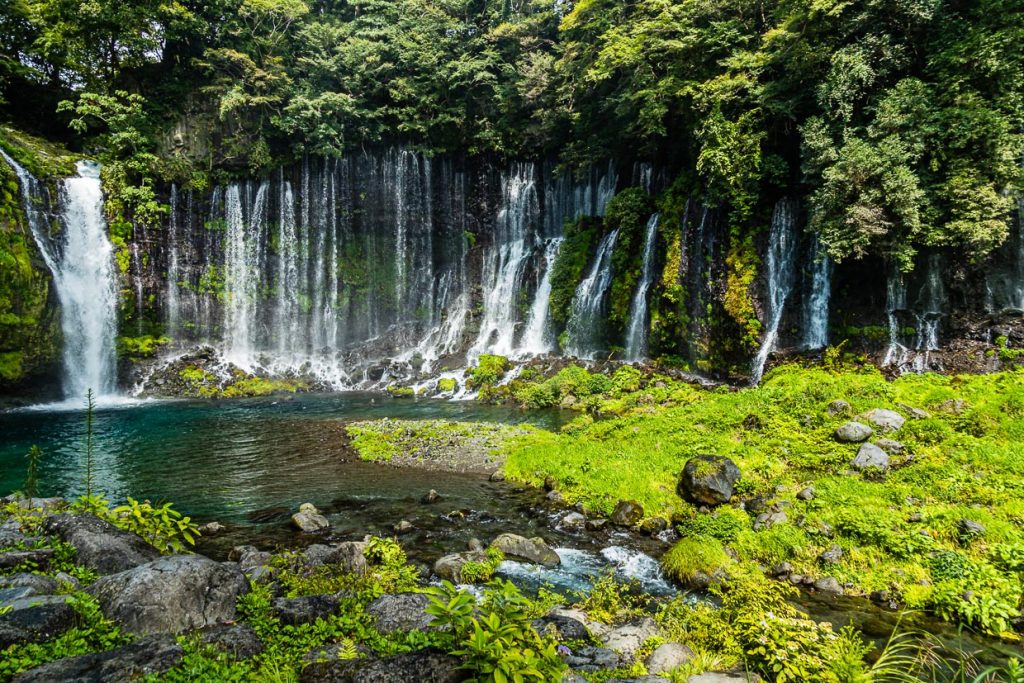
Soba, sake, satoyama – typically Japanese
Translated, Satoyama means the area between mountain foothills and farmlands. They represent a typical Japanese landscape. Mountains, hills and mountain ranges are abundant in Japan and so is a lot of satoyama. On the way to the village of Yuno, just a few kilometers north of Fujinomiya, we pass the Shiraito Waterfalls. The waterfalls, which are also a World Heritage Site, are fed by the meltwater of Mount Fuji. Here, in miniature, one can discover much that is typically Japanese. Arriving in Yuno, we continue by bicycle. It goes through a fertile and agricultural area at the foot of Mount Fuji. The river Shiba supplies the rice fields around the village with water.
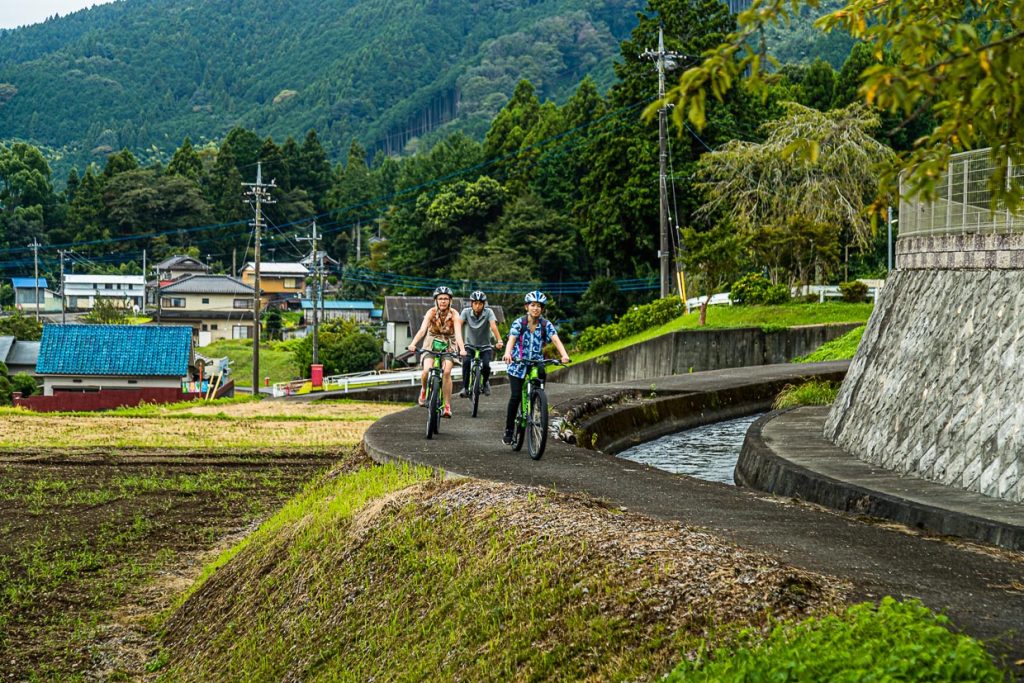
Soba – crazy about noodles
You think you know the typical Japanese food. Rice, of course, always and with everything. But the Japanese are just as crazy about noodles. There are udon noodles, thicker wheat noodles, there are ramen, thinner noodles made of wheat, originally from China and there are soba, typical Japanese noodles made of buckwheat flour. They are grayish in color and taste slightly nutty.
In Japan, you always come across people who devote their entire lives to one particular activity. A life without this one passion seems inconceivable and is also not intended. They continue to contribute and pass on their skills well into old age. We have such an encounter with Sumiko Sano. 85 years old, very friendly, hunched by age and very determined in her instructions when preparing soba noodles.
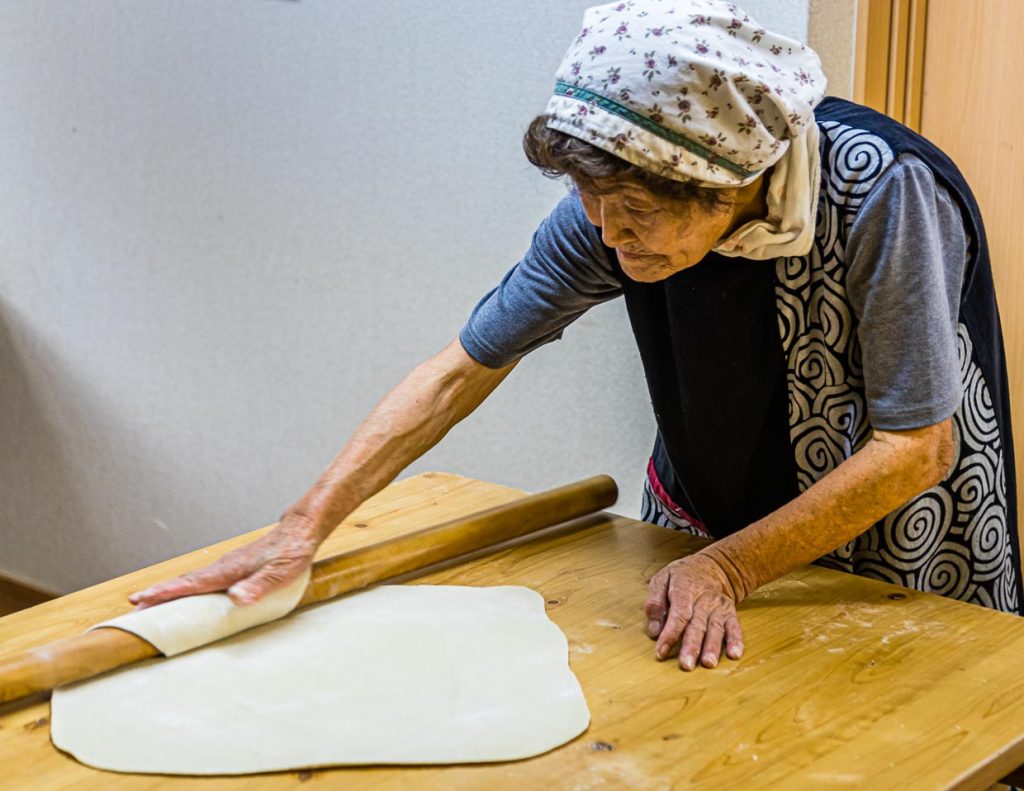
A life for a craft
Sumiko Sano has been running a small restaurant in the village for 28 years. She took over the restaurant management from a lady who was also very old at the time. She is currently assisted by two women who are about twenty years younger and ready to take over the title and task in the near future. It has been like this here for generations. More precisely, for 19 generations and about 400 years, Sumiko Sano’s family has been growing buckwheat. Soba, or buckwheat, is harvested twice a year at the foot of Mount Fuji. Sumiko cooks the noodles of the same name in the water of the sacred mountain.
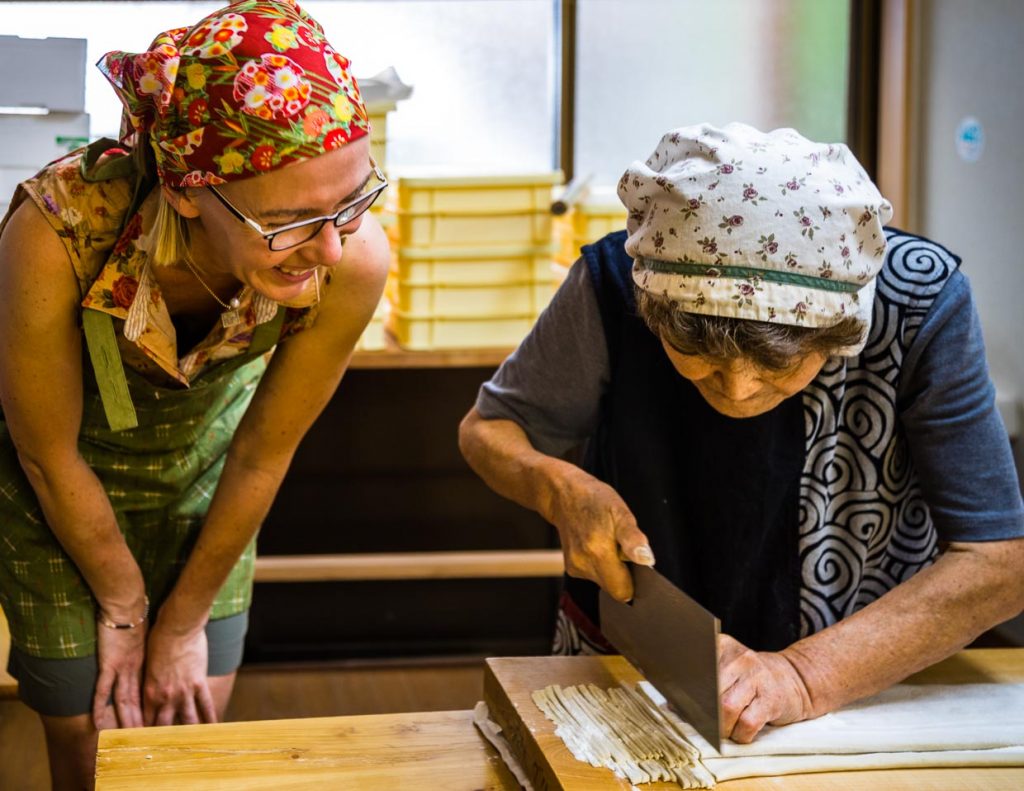
Mastering the production of soba noodles requires more than three years of training. It involves the composition of the buckwheat grains, whether or not some wheat flour is added, the quality of the water, the kneading technique and, most importantly, the thickness that the hand-cut dough should later have and how often the noodles are still rinsed with clear water after cooking.
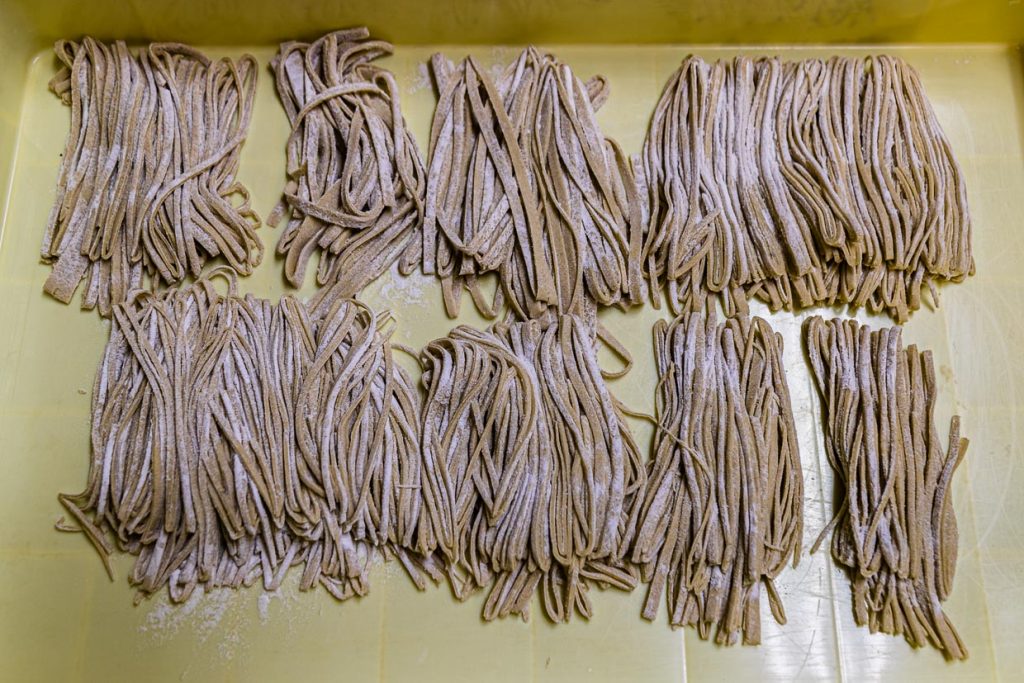
Soba noodles boil for three to four minutes and are boiled a total of three times. With a ladle, they are put back into cold water and boiled again. At the end, they are rinsed at least three more times with plenty of water. Sumiko Sano walks quite briskly through the long thin soba noodles with her hands spread like a big fork.
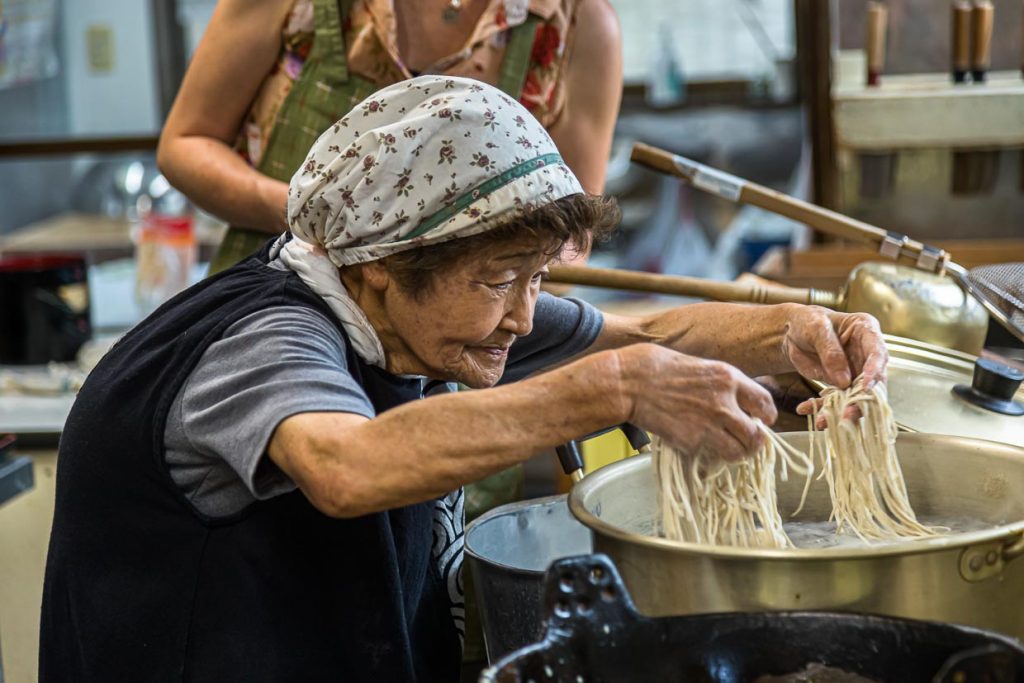
The grayish, slightly nutty-tasting noodles are served together with a broth. Depending on the season, the broth is either hot or cold and consists of dashi, dark soy sauce, mirin and some sugar. Soba noodles are eaten with chopsticks. And they should definitely be slurped loudly audibly. The strong suction of determined slurping allows enough broth to enter the mouth while eating. Scent and aroma can develop better this way. In addition, the sound, which has been banned from the dining table in Europe, is a clear signal to the cook that the food is delicious.
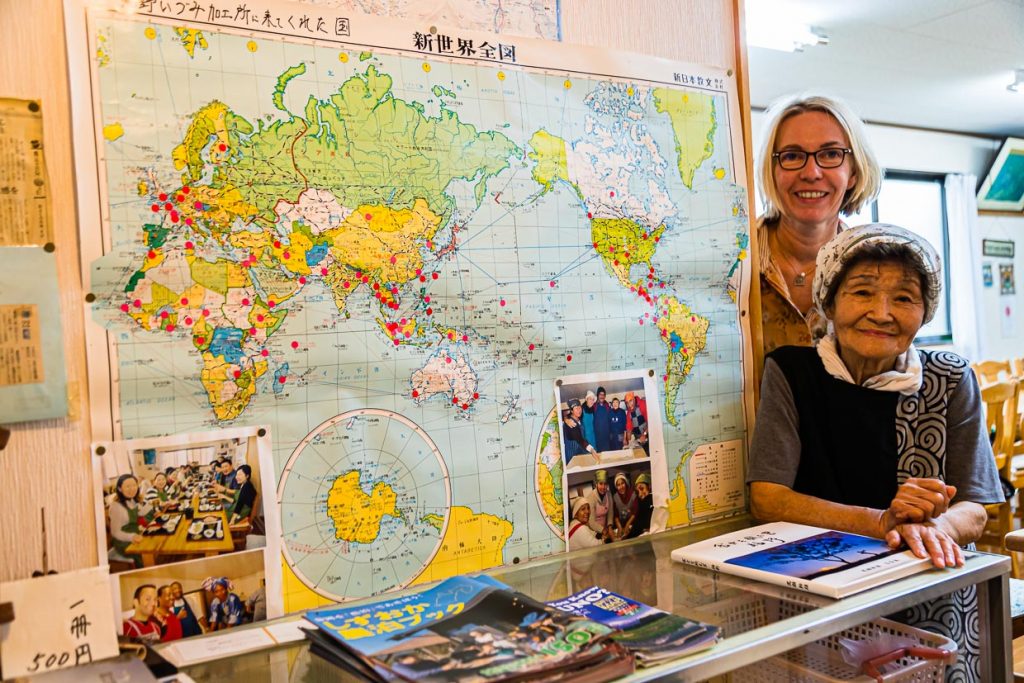
Sake or “swords to plowshares”
With a good portion of soba noodles in the belly, we get on the bike and continue to a nearby sake brewery. There are sake breweries all over the country. A tasting of the products made there is usually offered around the year. Production consists of a two-step fermentation process. Polished rice, water, koji mushroom and yeast, these ingredients are used to create sake. At the Fuji Nishiki sake brewery, founded in 1688 and now in its 18th generation of family ownership, the boss leads us to the huge steel tanks. True to the motto “swords to plowshares,” the green giants were made from the sheet metal of warships after the end of World War II. A successful repurposing in times of need.
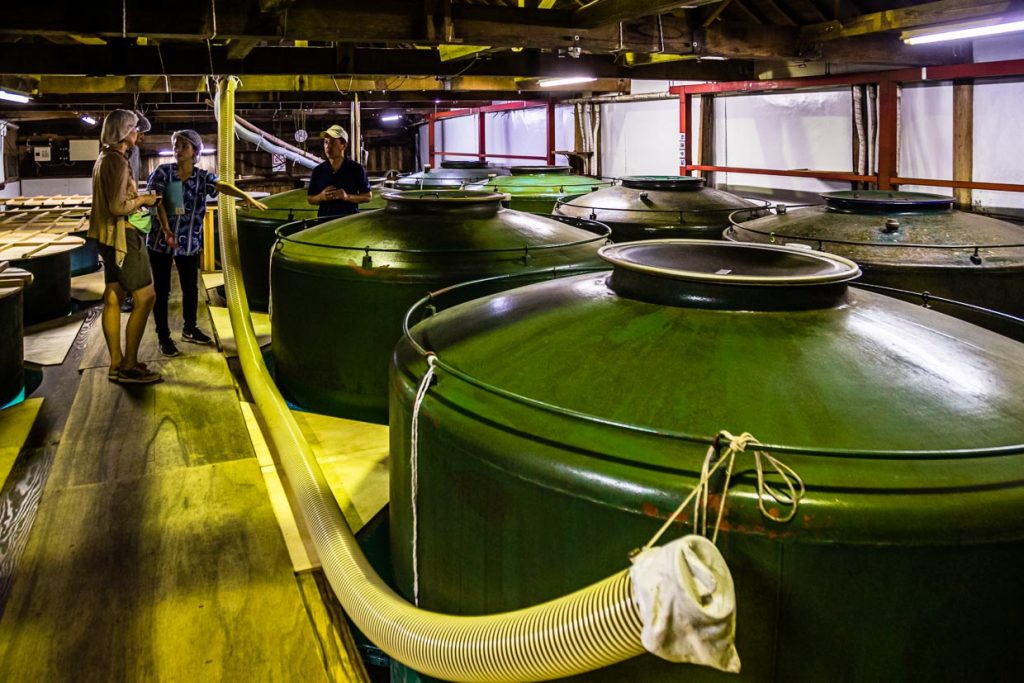
Overnight stay in a Japanese vacation home. The Goten is laid out with tatami mats in the living and sleeping areas. The decor is Japanese stripped back with select decorative elements in the alcove, it has two bedrooms as well as two bathrooms and a kitchenette.
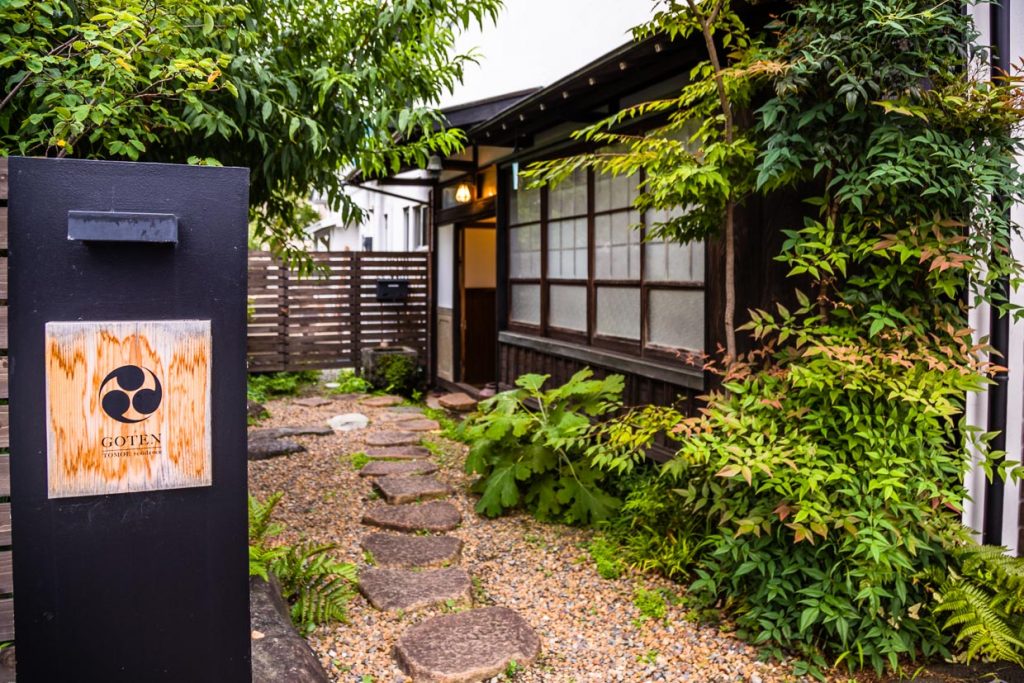
The stay in the prefecture was supported in part by the Shizuoka Tourism Association

